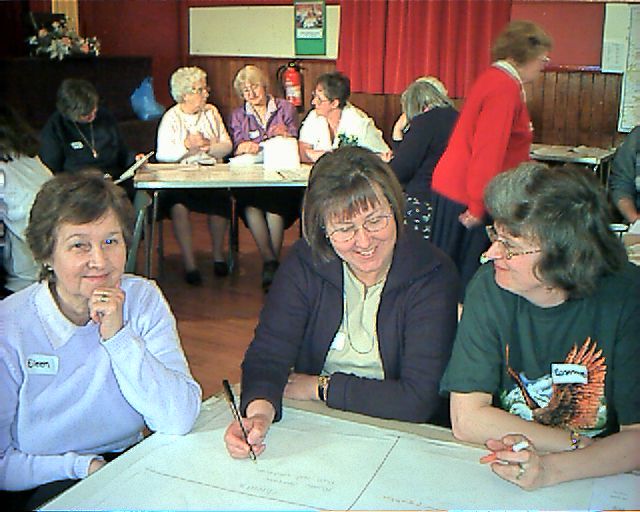Participative Methods 1: General Principles
Of the three functions:
the first is most important. If you cannot hear residents’ views, community development cannot happen. Ask residents to express their views through conversations, mediated through spoken words, writing or pictures. Participative methods enable recorded conversations in non-directive environments. Whilst structured meetings are important, sometimes agendas set aside help people find space to express their concerns.
Facilitation of participative conversations, using any method, requires an understanding of some basic principles and a feel for what is genuine participation.
You need experience and so experiment! How?
- Accept you will get it wrong frequently and when experienced, from time to time.
- Wherever possible work with a partner. Give each other permission to point out where you fail to work participatively.
- Watch others at work, take part in events and take whatever training is on offer.

Setting up small groups around tables is not so difficult. You will be surprised how many can be accommodated!
General Principles
Information about these methods is hard to find practitioners pass them on through training. Whilst this may be frustrating it is good to heed their warnings. Here are a few things to consider when you set out to work participatively.
- Community groups often have inspirational and engaging leaders, who do not work participatively. You need to prepare for any event by explaining what you are trying to do. It is not worth going to the trouble of organising anything participative if the leaders do not understand and support it. They can wreck an event in seconds and will do so if they do not support it.
- Rearranging furniture can make a big difference, eg a move from chairs in rows (an arrangement which enables control of a meeting) to chairs around small tables.
- But don’t stop there; think through changes to the ways of you work with this layout. What do you need on each table to help sharing ideas? Paper, pens, background information, models …
- Plan a programme that moves between different approaches depending on participants’ emerging needs.
- Working with a team means you can have a team member on each table. They can explain each stage and report back about how you can improve participation.
- Sometimes experienced resource people dominate a table but you can hold them in reserve. When people ask, they can go to a table and contribute their expertise.
- The information generated needs to be recorded. Work out how to do this before the meeting.
- Make sure the participants understand their information belongs to them, will be available to them and can be withdrawn at their request.
Helpful Links
I have previously written posts about participatory methods. Over the next few weeks I shall revisit them, considering how each is used in typical UK community development contexts. These links are to the earlier posts.
Participative Methods
Other Approaches
What is your experience using participative methods? What difficulties have you met and what tips do you have for participative meetings?